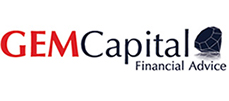In many cases, proceeds from the sale of a business form a large part of a small business owner’s retirement funds. Maximising the return on sale is therefore important to ensure a comfortable retirement
Tax concessions are available to small business owners who are selling business assets if certain basic conditions are met. A summary of these tax concessions and the basic criteria that must be met is summarised below.
As this is a complicated area, we recommend individuals obtain tax advice specific to their business structure and arrangements..
The four CGT concessions.
The four small business capital gains tax (CGT) concessions are:
- 15-year exemption – this concession totally exempts any capital gain made upon sale of the business asset. To be eligible, a small business entity must have continuously owned the CGT asset for a minimum of 15 years and, at the time of disposal, the individual is 55 or over and the disposal is connected to their retirement, or the individual is permanently incapacitated. If the business operates as a company or under a trust structure then the entity must have a ‘significant individual’ for any period or periods totalling 15 years during the period of ownership.
- The 50% active assets reduction – a 50% reduction of a capital gain.
- The retirement exemption – an exemption of capital gains up to a lifetime limit of $500,000. If the recipient is under 55, the amount must be paid into a superannuation fund and normal preservation rules apply.
- The rollover concession – a deferral of a capital gain if a replacement asset is acquired. The deferred capital gain may later crystallise when the replacement asset is sold or its use changes.
- If an asset is being sold by an individual and the asset has been held for more than 12 months, the capital gain must first be reduced using the 50% discount before applying any of the above mentioned small business CGT concessions.
The eligibility conditions?
To be eligible to use the small business CGT concessions, an individual (or entity) must first satisfy several basic conditions:
- the $6 million net asset value test or the $2 million • aggregated turnover test
- the active asset test, an
- if the business operates as a company or under a trust structure, it must also meet the 20% significant individual test.
$6 million net asset value test?
A business that meets the $6 million net asset test is considered a small business by the ATO. To meet this test, the net value of CGT assets of the individual and certain related entities must be less than $6 million.
The net value of CGT assets is the market value of those assets less any liabilities relating to those assets.
Certain assets are excluded from the test, such as assets held for personal use and enjoyment, superannuation entitlements and the value of life insurance policies.
$2 million aggregated turnover test
A business that fails the $6 million net asset value test can still be considered a small business by the ATO if it meets the $2 million aggregated turnover test.
To meet this test, the aggregated turnover of the individual plus any affiliated or connected business entities must be less than $2 million.
There are three methods for determining aggregated turnover:
- using the previous year’s aggregated turnover
- estimating the current year’s aggregated turnover, or
- using the actual current year’s turnover
Active asset test
A CGT asset is an active asset if it is owned by the individual (or entity) and it is used, or held ready for use, in a business carried on by the individual (or entity), the individual’s affiliate, their spouse or child, or a connected entity.
The asset does not need to have been active at the time of disposal, but it must have been active for the lesser of 71/2 years or half of the period of ownership.
If the asset being sold is a share in a company or unit in a trust, an 80% look-through test applies, meaning that the shares or units will be considered active assets if at least 80% of the market value of the underlying assets of the company or trust are active assets.
Significant individual test
If a business is run through a company or trust structure, one of the following additional basic conditions must be satisfied just before the CGT event:
- the entity claiming the concession must be a CGT concession stakeholder in the company or trust, or
- the CGT concession stakeholders in the company or trust together have a small business participation percentage in the entity of at least 90% (the 90% test).
An individual is a CGT concession stakeholder of a company or trust if they are a significant individual, or the spouse of a significant individual where the spouse has a small business participation percentage in the company or trust. This participation percentage can be held directly or indirectly through one or more interposed entities.
An individual is a significant individual in a company or trust if they have a small business participation percentage in the company or trust of at least 20%. The 20% can be made up of direct and indirect percentages.
Note: Any advice contained in this flyer is general in nature and does not consider your particular situation or needs. Please do not act on this advice until its appropriateness has been determined by a qualified adviser. We are not, nor do we purport to be registered tax agents. We strongly recommend you seek detailed tax advice from an appropriately qualified tax agent.
For more information about the Small Business CGT Concessions or to arrange a no-cost, no-obligation first consultation, please contact:
Phone Number: 08 8273 3222
